Guest post by Ann Sylph, Librarian at the Zoological Society of London (ZSL)
As the saying goes, “a picture is worth a thousand words.” Both art and science help people to reconnect with nature and to take action to protect it. The value of art in communicating science is increasingly being recognized and valued. And women artists have always been integral to this enterprise.
In zoology, as in botany, women have been involved in depicting species over the centuries. As the known world expanded, women were observing, depicting, illustrating, describing animal species. Often their work showed the animal for the first time to a wider public and to explorers, scientists and naturalists.

The collections of art and illustrations at the Zoological Society of London (ZSL) mainly depict animals for scientific purposes or “sciart,” often newly described and discovered species. The role of these artists is to depict the animal accurately and to emphasize the key identifying characteristics. This is so important and often today illustrations, rather than photographs, are used in field guides. Although they were constrained by the need to meet specific requirements in depicting animal species, many of these women did exhibit their own artistic expression.
In this short blog, I can mention only a few women; so I decided to highlight some work of the late seventeenth and early eighteenth centuries, then move on to the twentieth. There were many women zoological artists in the interim period but I thought it would be interesting to see the contrast between the centuries.

Maria Sibylla Merian, 1647–1717, was an entomologist and artist. Her careful observations of insects helped to disprove the theory of spontaneous generation, and to prove that insects had a life cycle. She depicted insects, their life cycles and associated food plants. Thus she could also be regarded as an early ecologist.
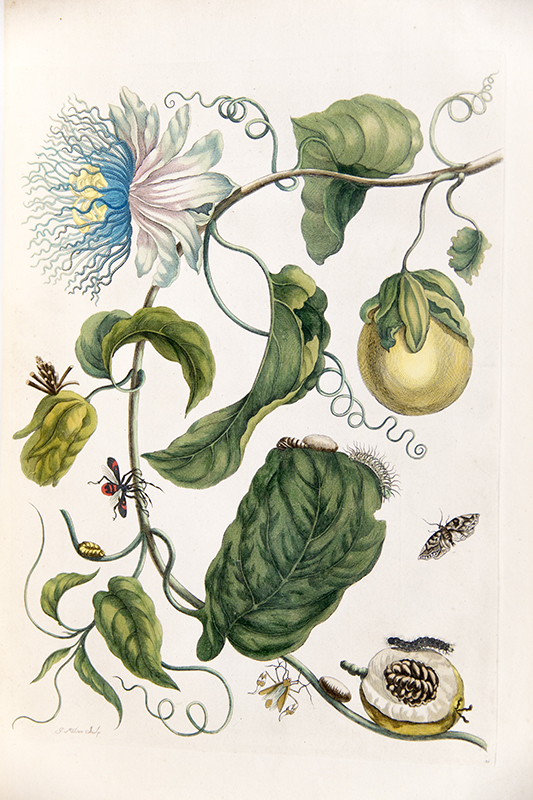
In 1699, at the age of 52, she sailed to Surinam in South America. She was accompanied by her youngest daughter, Dorothea. They studied the tropical insects found there. The result of this journey was her magnum opus Dissertation sur la génération et les transformations des insectes de Surinam in which she depicted many species for the first time. ZSL’s copy of this masterwork was published in 1726 with the text in Latin and French. Later authors copied her idea of arranging insects on the page, showing the life cycle and food plants.

Susanna (Susan), born 1670, and Anna (Nancy) Lister, born 1671, were the daughters of Martin Lister, Vice President of the Royal Society. He came to rely on his teenage daughters to illustrate his scientific work. ZSL Library has a 1770 reprint of the earliest work to which they contributed, Historiae sive Synopsis Methodicae Conchylorium (Huddesford, 1770).
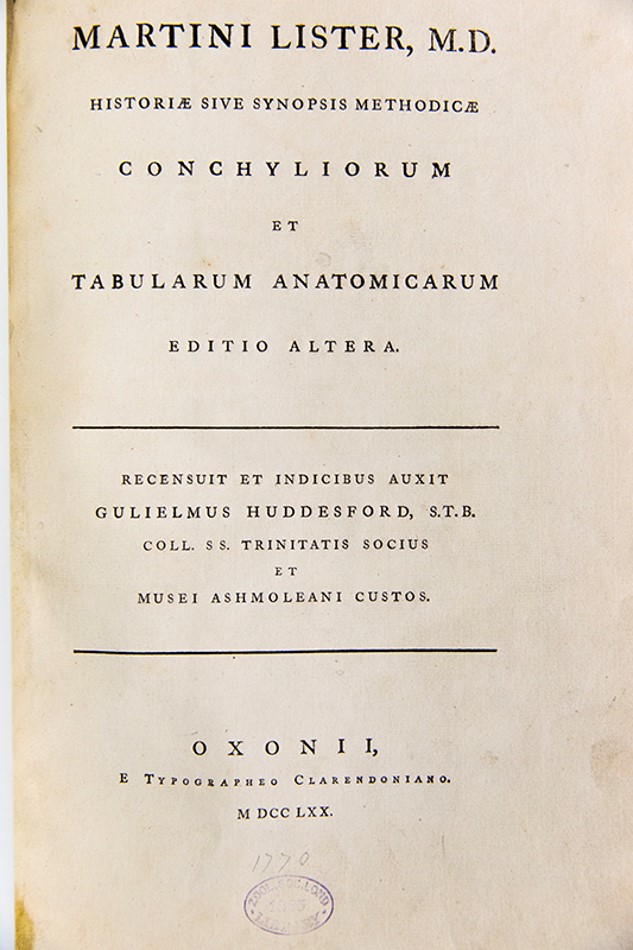
The illustrations have decorative borders added by the two women. The original edition was compiled in 1685–1692; it contained over 1,000 engraved plates of shells. Their father guided the girls in their artistic development and trained their observation skills so they could accurately depict specimens. As well as working from their father’s collection of shells, they borrowed shells from other collectors such as Sir Hans Sloane. Some of Sloane’s shells still exist and are in the collections of the Natural History Museum; they can be identified from characteristics shown in the detailed illustrations.

The young artists illustrated their detailed dissections of molluscs, using microscopes to examine the specimens. Their works set a new standard for conchology (the science of the study of snail shells). Taxonomists relied on their studies for many years. They were some of the first to recognise the chirality of shells—the direction of the spiralling. Previously the direction was often printed in reverse, but the Listers recognised the importance of showing the direction. They ensured that their printed illustrations showed the same direction of chirality as in nature.
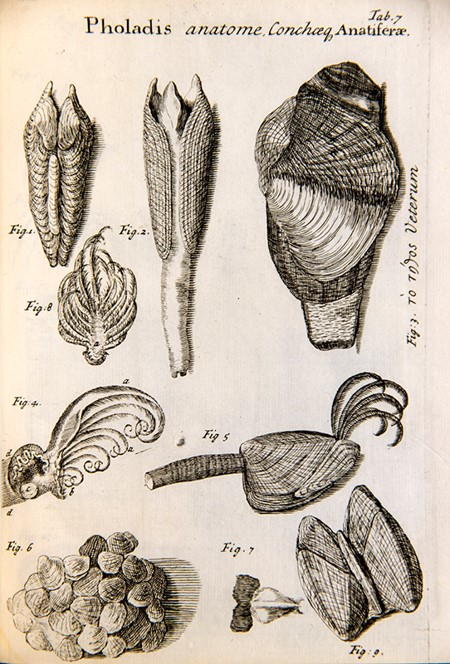
In the intervening centuries there were many women artists and illustrators of the natural world, but I am moving on to the twentieth, as a contrast to those we have looked at already.
For me, one of the most inspiring twentieth-century women is Joan Beauchamp Procter, 1897–1931, A fascinating and important woman from ZSL’s history. In 1923 she was appointed as ZSL’s Curator of Reptiles and Amphibians. She wrote many articles and papers, and she was a talented artist and designer. She achieved so much in her relatively short life. Her design skills were used at ZSL London Zoo in both the Aquarium and Reptile House.
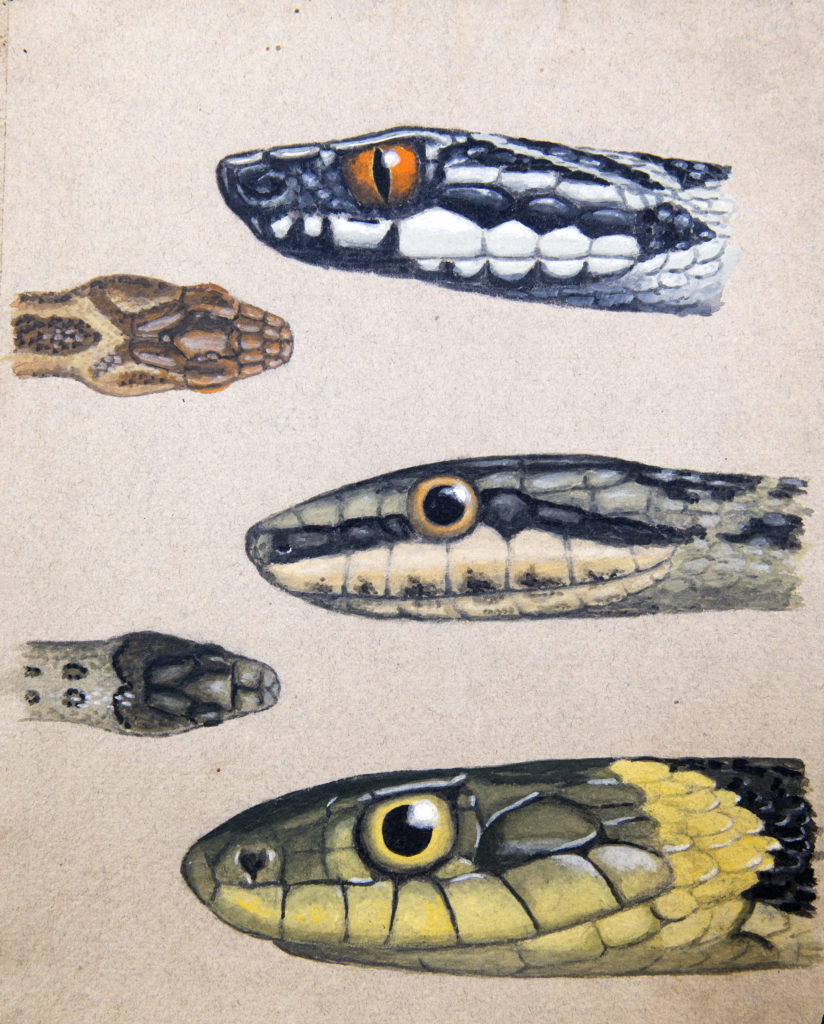
Do view The Reptile Expert, Objectivity Video # 220 on YouTube, where I talk to Brady Haran about Joan, and highlight items in our collections. This particular painting is a favorite of mine, as I have fondness for geckoes. It was reproduced as a print to accompany one of Joan’s papers in ZSL’s Proceedings, which continues as the Journal of Zoology.
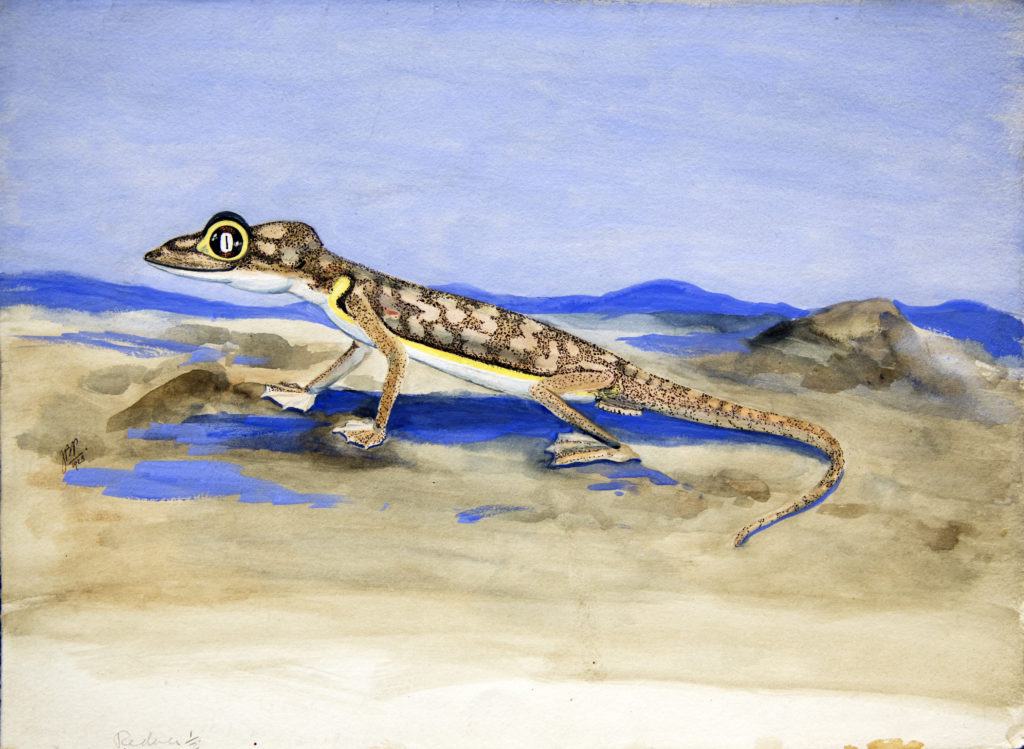
Painted to illustrate her published paper in Proceedings of the Zoological Society 1928, On the remarkable gecko Palmatogecko rangei Andersson by Joan B. Procter pp. 917-922 DOI: 10.1111/j.1469-7998.1928.tb07172.x
Lily Attey Daff, 1885–1945, was a New Zealand artist and illustrator. She prepared many illustrations for publication in New Zealand Birds, by W.R.B. Oliver (1930). She was responsible for the front covers of the magazine Forest and Bird (a New Zealand nature journal) from 1933 to 1937. She illustrated three issues of Avicultural Magazine with colour plates of Australasian birds—Kea, Norfolk Island Parakeet and Ruffed (or Solitary) Lory in 1934 and 1937.
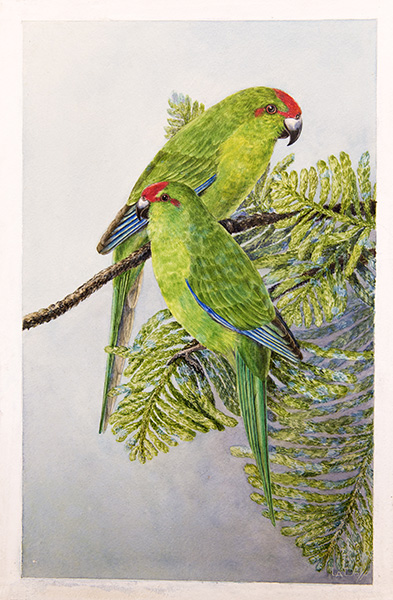
Painted to accompany an article in Avicultural Magazine (Series 4) Vol. 12, No. 11, 1934, to illustrate the paper by S. Porter, “Notes on the Cyanorhamphus parrakeets”, pp. 273-285. Source, ZSL Library (which holds the original artwork).
She arrived in Otago in 1926 and painted many watercolours for the Forest & Bird Protection Society. She painted dioramas for Otago Museum and illustrated the Museum’s pamphlets on natural history. There is more information about her in the Alexander Turnbull Library, National Library of New Zealand. This Daff painting from ZSL’s collections depicts a New Zealand Kea, a type of parrot, which is an endangered species.
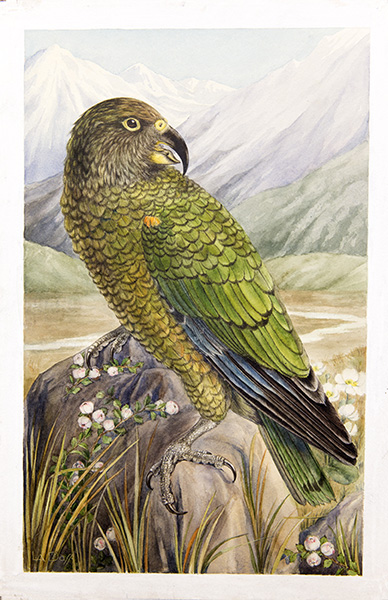
Painted to accompany an article in Avicultural Magazine, (Series 4), Vol. 12, No. 3, 1934 to illustrate the paper by S. Porter on “Notes on New Zealand birds,” pp. 65-75. Source, ZSL Library (which holds the original artwork).
In addition to the artists discussed above, eighteenth- and nineteenth-century female zoological illustrators of particularly note include:
- Elizabeth Gould (née Coxen);
- Sarah Smith (née Stone);
- Madame Knip (née Pauline de Courcelles); and
- Rosa Bonheur
We are too late to save species which are extinct, but ZSL is actively trying to conserve endangered species. Depictions of endangered species in sciart can help to inform conservation action to stop the animals going extinct and to raise awareness of their plight.
I hope that as well as highlighting the invaluable contributions of women artists and illustrators to the field, this blog post will inspire others to engage with zoology, wildlife conservation and ZSL’s vision of a world where wildlife thrives.
ZSL Library & Archives is a wonderful and unique information resource about animals and their conservation. We use our collection to inspire, inform and empower people to stop wild animals going extinct. Our collections can be explored and discovered in a variety of ways:
- Come in and browse. Normally we are open Tuesday to Thursday 9.30am to 5.30pm. However, owing to the coronavirus crisis ZSL Library is closed until further notice.
- Use our online catalogue, accessible on the web. It contains details of our holdings and links to useful resources. There are thumbnails images of many of our paintings in the catalogue.
- Read our monthly blog, which highlights items in our collections.
- Follow us on Twitter, @ZSLLibrary.

Ann Sylph is Librarian at the Zoological Society of London (ZSL). She oversees operations at the library and archives, which support ZSL’s purpose to inform, inspire and empower people to stop wild animals going extinct. Her degrees include BSc Ecology and MSc Information Science; she is a Member of the Chartered Institute of Library and Information Professionals (MCLIP). Her role at ZSL allows her to combine her interests in wildlife conservation and information. She is keen to ensure ZSL’s ability to offer its collections both as an academic resource, and for public engagement. Ann is particularly interested in the contribution of women to the development of zoology, history of marine zoology, historical scientific illustration. She and her colleagues maintain a blog where she posts regularly. She also tweets: @ZSLLibrary and @ZooLibrariANN.
References and Further Reading
Boulenger, E. G. (1931). “Dr. Joan B. Procter.” Nature, Volume 128, issue 3233, pp. 664–665. doi:10.1038/128664b0
Hart, Andrea (2014). Women artists: Images of nature. London: Natural History Museum.
Heard, Kate (2016). Maria Merian’s butterflies. London: Royal Collection Trust.
Huddesford, Gulielmus (1770). Historiae sive synopsis methodicae Conchyliorum et tabularum anatomicarum editio altera; recensuit et indicibus auxit Huddesford. Oxonii: e typographeo Clarendoniano.
Merian, Maria Sibylla (1726). Dissertation sur la génération et les transformations des insectes de Surinam… La Haye : Cosse.
Owens, Susan (2007). Maria Sibylla Merian: “Great diligence, grace and spirit” In Amazing rare things: the art of natural history in the age of discovery, David Attenborough et al. London: Royal Collection Publications.
Roos, Anna Marie (2019). Martin Lister and his remarkable daughters: the art of science in the seventeenth century. Oxford: Bodleian Library / University of Chicago Press.
Rücker, Elizabeth and William Stearn (1982). Maria Sibylla Merian in Surinam. London: Pion Limited. (Includes translation into English of Merian’s Dissertation sur la génération et les transformations des insectes de Surinam.)
Topley, Peter (2016). Dr Martin Lister (1639–1712)—pioneer conchologist. Mollusc World, issue 42, pp. 6-13.
Valdez, Patricia, illustrated by Felicita Sala (2018). Joan Procter, dragon doctor: the woman who loved reptiles. London: Andersen Press. (A book for children)
If you liked this Art Herstory guest blog post, you might also enjoy:
Barbara Regina Dietzsch: Enlightened Flower Painter, by Andaleeb Badiee Banta
Madeleine Françoise Basseporte’s Hyacinths at the French Court, by Mary Creed
Curiosity and the Caterpillar: Maria Sibylla Merian’s Artistic Entomology, by Dr. Kay Etheridge
The Protofeminist Insects of Giovanna Garzoni and Maria Sibylla Merian, a guest post by Professor Emma Steinkraus
Floral Still Life, 1726—A Masterpiece by Rachel Ruysch, by Dr. Lawrence W. Nichols



